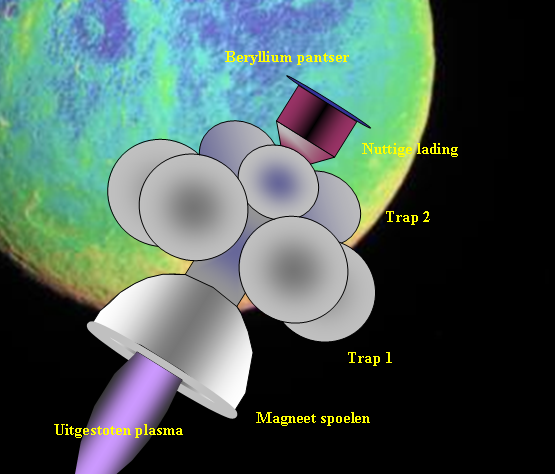In a curse of irony, last time I had a rocket Wednesday I mentioned that I would cover nuclear powered rockets and at the time of this writing, the future nuclear landscape has changed drastically due to the events in Japan (which I covered in an earlier post). Still as an important possibility in propelling starships, nuclear still is an important option to consider and is worth looking in to.
While there are many different varieties of nuclear propulsion available to starships, one of the more fascinating is nuclear pulse propulsion. The concept of driving a ship with nuclear based technology is not new and dates back into the WWII era, but by far one of the more interesting ideas came out of the 70's. Project Daedalus was a British plan to build the first interstellar ship with the intent of reaching the stars within a life time.
By feeding nuclear pellets into a laser reactor, a plasma explosion could be generated which could slowly accelerate a ship. While there was no plan to slow down Project Daedalus, it would be theoretically capable of reachin other stars. The intended target of the project was the fast-moving Bernard's star (since we know its speed precisely and over the lightyears of travel, all stars would also move due to time) and though the original speeds would be comparatively small, after 50 years of accelerating slowly, it would be moving quite fast.
One major problem that would be encountered by an astronaut on such a vessel would be acceleration. While it is feasible to build such a ship, the human body can only withstand a certain amount of force and it could get quite tedious to live an entire lifetime feeling several G's of force always pulling on you. A nuclear derived thrust system could be designed to accelerate only at a moderate amount, and though it would take longer for a ship to get to its destination, the astronauts on board would be feeling significantly better about their situation.
Next week we will look at other options for exploration and the ships that could be used to get there.
May the stars shine bright in your skies!
tip of the hat to the wikipedia spacecraft propulsion page and also to whoever finds flaws in this, I am not the best at nuclear technology


I'm a little confused by your post. Do you think this kind of research could be affected by what has happened in Japan? Or are you just noting the coincidence? And what are the risks of this sort of propulsion? Is this mostly theoretical at this point or is it really being considered?
ReplyDelete